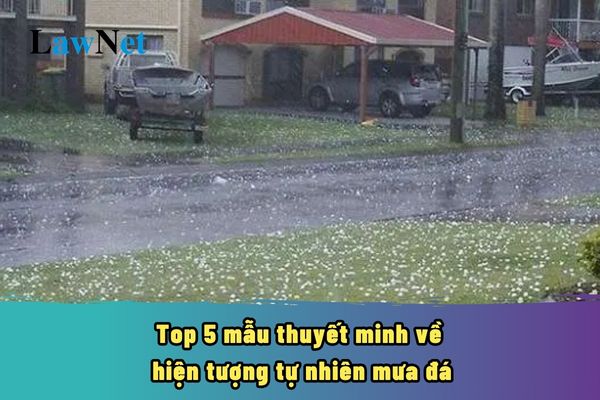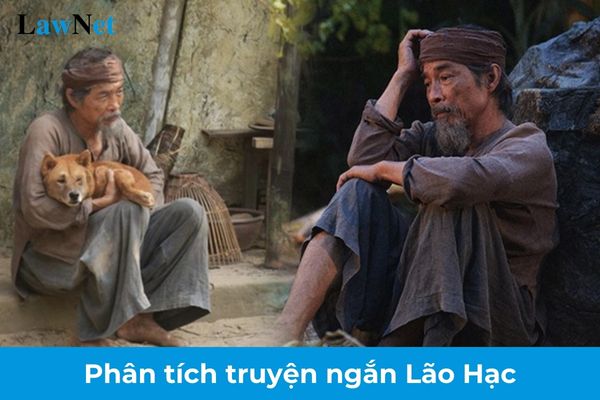Vietnam: What are the guidelines for analysis of the character "Don Quijote" upon fighting with windmills in the 8th-grade Literature program? What does the text corpus of the 8th-grade Literature program include?
What are the guidelines for analysis of the character "Don Quijote" upon fighting with windmills in the 8th-grade Literature curriculum in Vietnam?
1. General Introduction of the Character and the Work
Don Quijote is the main character in the titular novel by Spanish writer Miguel de Cervantes, considered one of the masterpieces of world literature. The image of Don Quijote has become a symbol of a type of person living in a world of noble ideals but detached from reality. The excerpt "Fight with Windmills" portrays this character vividly through an adventure full of delusions, highlighting the conflict between ideals and reality.
2. Analysis of the Character Don Quijote
a. Romantic and Idealistic Nature of Don Quijote
Don Quijote lives in a world of ideals and fantasies. He imagines himself as a medieval knight embarking on a journey to fight for justice and protect the weak. Through the excerpt, he shows determination and absolute belief in his noble mission.
In Don Quijote's eyes, windmills become "giant brutes" that need to be destroyed. This illustrates the character's delusion and detachment from reality. Don Quijote turns meaningless things into seemingly "heroic" battles, driven by the belief that he is doing great deeds for society.
b. Courageous but Illusory and Blind
Don Quijote plunges into the battle with windmills without fear. He sees himself as an undefeated knight, always ready to sacrifice for the noble ideal. However, reality proves that his actions are meaningless and irrational.
Despite Sancho Panza's advice, Don Quijote remains adamant that he is doing the right thing and refuses to accept the reality before him. This clearly shows his stubborn, obstinate nature, willing to sacrifice himself for the imagined beliefs he pursues.
c. The Image of a "Ridiculous but Pitiful Hero"
Don Quijote is a "knight" of noble things but extremely naive. Fighting against windmills highlights the image of a "ridiculous hero", representing the clash of old romantic values with harsh reality. Don Quijote becomes lonely, isolated, and mocked by society.
However, he still garners sympathy due to his pure heart and beautiful ideals. He is not truly "foolish" but someone living in the nostalgia of a bygone era.
3. Significance of the Character Don Quijote
Don Quijote is a symbol of individuals with noble ideals, ready to sacrifice for their goals but lacking the wisdom to recognize the difference between ideals and reality. Don Quijote represents the conflict between ideals and reality, between lofty dreams and mundane life.
Through this character, Miguel de Cervantes imparts reflections on human nature, on beautiful ideals that may not fit reality but enrich life. Don Quijote's image, both humorous and pitiful, reminds us to balance reality and dreams, avoiding delusions detached from reality.
4. Conclusion
Don Quijote in the excerpt "Fight with Windmills" is a character symbolizing noble but unrealistic ideals, containing elements of romance and humor. His image reflects internal conflicts of humanity, between ideals and reality, dreams and daily life. Although a "failed knight", Don Quijote inspires courage and perseverance in pursuing dreams, reminding us about the power and limitations of ideals in life.
Below are some sample analyses about the character "Don Quijote" upon fighting with windmills:
Sample No. 1
"Don Quijote" by Cervantes is a famous masterpiece, where the main character is successfully built, conveying many meaningful lessons. The excerpt "Fight with Windmills" is just a small part of the work, but it partly depicts the character's unique personality.
Initially, Don Quijote is a poor nobleman, infatuated with knight novels to the point of wanting to become a knight to carry out righteous deeds. With a thin, tall figure, he rides a scrawny horse, wears armor, a helmet, and carries rusty old gear. This shows his determination to become a knight to "eradicate this wicked breed from the earth as a service to God." However, the era of knights had passed, and Don Quijote's aspirations became outdated, making his thoughts and actions a source of laughter for everyone. He doesn't understand that the windmills are mere industrial machinery and decides to "fight" them, ignoring Sancho Panza's advice. He even disregards the squire's advice and engages in battle, showing the brave spirit of a knight.
Though the character Don Quijote's image in the excerpt is filled with satire and humor, behind it are noble ideals of chivalry. He detests evil and wrong and is determined to eliminate them to protect the innocent. He not only has a noble ideal but is also brave and ready to face challenges. In the fight with the windmills, although he knows it is an unequal battle, he still decides to confront them, showing his resilient spirit: "Don't flee, vile cowardly men, for there is but one knight attacking you."
With these attributes, the character Don Quijote appears multidimensional. He not only possesses beautiful qualities but also bears imperfect aspects. Through this character, Cervantes wishes to convey noble humanistic thoughts.
Sample No. 2
"Don Quijote," the great work by legendary writer Cervantes, has become a symbol of Spanish culture. In the excerpt "Fight with Windmills," we witness an important aspect of the main character, Don Quijote. Despite having lofty ideals, he falls into humorous and laughable situations influenced by classical chivalric works.
While on his way to fulfill his unrealistic plans, Don Quijote and his companion encounter a series of windmills across a field. His rich imagination transforms these small windmills into terrifying giants, and he decides to challenge them. At that moment, the wind blows strongly, the windmills start to turn, and Don Quijote cannot restrain his fervor. The battle ends with him severely injured, but his belief in his adventurous path remains unshaken.
This excerpt is a vivid depiction of Don Quijote's unique personality. His obsession, fueled by pages of classical chivalric books, leads him into absurd and humorous situations. Even with his lofty ideals, his actions become laughable when facing "opponents" like windmills instead of evil adversaries.
Don Quijote's character continues to be demonstrated as he does not whine about his severe injuries, proving himself to be a strong and resolute knight. Even when facing danger, he pays no attention to basics like eating and instead indulges in illusions about a "lady love."
Despite having many positive aspects, Don Quijote becomes an incredibly humorous and pitiful character for being too immersed in the world of chivalry. His unwavering beliefs and noble ideals become both a source of laughter and sympathy for readers.
(Note: The information is for reference purposes only)

What are the guidelines for analysis of the character "Don Quijote" upon fighting with windmills in the 8th-grade Literature curriculum? What does the text corpus of the 8th-grade Literature curriculum in Vietnam include? (Image from the Internet)
What does the text corpus of the 8th-grade Literature curriculum in Vietnam include?
Under Sub-Section 2, Section 5 Circular 32/2018/TT-BGDDT, the text corpus of the 8th-grade Literature curriculum includes:
(1). Literary Texts
- Funny stories, short stories, historical stories
- Satirical poems, seven-word eight-line rhyme, four-word Tang law poems; six, seven-word poems
- Comedy
(2). Argumentative Texts
- Social argumentation
- Literary argumentation
(3). Informative Texts
- Expository texts explaining a natural phenomenon, texts introducing a book
- Petition texts
What are the general objectives of the 8th-grade Literature curriculum in Vietnam?
According to Section 3, Appendix Circular 32/2018/TT-BGDDT, there are three general objectives of the 8th-grade Literature curriculum in Vietnam as follows:
(1) Help students continue to develop the good qualities formed in primary school; enhance and expand the requirements for the development of qualities with specific manifestations such as:
+ Knowing pride in national history and literature;
+ Having dreams and aspirations, a spirit of self-study and self-respect,
+ Having a sense of citizenship, and respecting the law.
(2) Continue to develop general competencies, language capacity, and literary capability formed in primary school with higher requirements. Develop language capacity with the requirement:
+ Distinguishing between types of literary, argumentative, and informative texts;
+ Understanding both explicit and implicit content of different types of texts;
+ Writing narrative, descriptive, expressive, argumentative, expository, practical texts that are complete, coherent, logical, follow the correct process, and incorporate various modes of expression;
+ Speaking clearly and coherently; possessing a confident, appropriate attitude for communication context; listening with an appropriate attitude.
(3) Develop literary capability with the requirement:
+ Distinguishing between genres of stories, poetry, signatures, literary scripts, and some specific sub-genres;
+ Recognizing characteristics of literary language; recognizing and analyzing the effects of formal elements and artistic measures associated with each literary genre;
+ Recognizing the expressive, cognitive, and aesthetic values; analyzing the imagery, content, and form of literary works;
+ Being able to create some products with literary characteristics.










- What are the answers to the online contest "Propaganda on Administrative Reform in Hai Duong Province" in 2024?
- What does an adjective mean? What is the role of adjectives in Vietnamese language? What is the grade whose Vietnamese language curriculum covers features of adjectives?
- What is the arithmetic sequence formula? What is the grade whose Mathematics curriculum covers arithmetic sequence in Vietnam?
- What do verb and verb phrase mean? What is the grade at which verbs are taught in the Vietnamese language curriculum?
- Vietnam: What are the Top 10 opening greetings for presentations by students? What are the regulations on speaking and listening teaching in Literature?
- What are the guidelines for preparing the lesson "Cổng trường mở ra"? What are the responsibilities of subject teachers in assessing students in Vietnam?
- Vietnam: What are the sample introductions for essays on the work "Hồn Trương Ba Da Hàng Thịt"? What genre does the work "Hồn Trương Ba Da Hàng Thịt" belong to?
- What are guidelines for analysis of the reasonable use of mineral resources in Vietnam? What are regulations on online teaching materials in Vietnam?
- What are the guidelines for writing an introduction for a literary argumentative essay for excellent students? What are the general objectives of Literature curricula in Vietnam?
- What are prohibited items in the exam room of the 2025 High School Graduation Exam in Vietnam?

